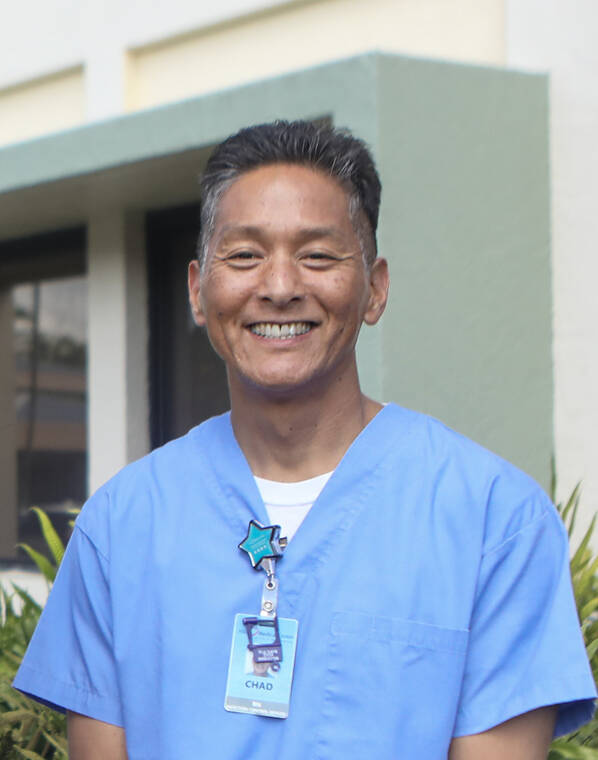Hawaii Island hospitals are reporting a slight increase in COVID-19 activity similar to rising rates throughout the state.
The Hilo Benioff Medical Center has seen a gradual increase in positive COVID-19 tests in its emergency department since the middle of May, according to Infection Control Nurse Manager Chad Shibuya.
“For the months of March and April, we were seeing incredibly low COVID-19 cases and sometimes going multiple days with zero cases,” Shibuya said. “We noticed sometime in the second week of May that we got an increase in people coming into our ER to be tested and an increase of people admitted into the hospital with COVID.”
HBMC on Friday had seven patients with COVID-19 in the hospital. Four patients were admitted for other health reasons and are incidental cases, and one COVID-19 patient is in the Intensive Care Unit.
“I wouldn’t call this a major spike in cases, but there is definitely an increase in the hospital,” Shibuya said. “As a whole, this variant seems milder than others. Most people have come in with low-grade temperatures in the 99 degree range, but some are experiencing higher fevers and a cough that goes along with it.”
According to the variant report from the state Department of Health, 29% of COVID-19 PCR tests taken on Hawaii Island have been reported positive in the last four weeks. About 70% of cases have displayed the JN.1 variant, which was dominant in the U.S. earlier this year.
While most people are not hospitalized and have mild symptoms, there is still a high impact on vulnerable populations, which include kupuna and those with underlying health conditions.
“It’s one of those things where we don’t see super high numbers of cases, and most of them don’t get super sick, but there is the occasional person who is much more susceptible and can get very sick,” Shibuya said. “We’ve been going through COVID for so long and many people have learned a lot in the process. The community is more aware of these illnesses and knows how to adjust behavior.”
According to Shibuya, the best measures to avoid sickness are wearing masks in public spaces, staying up to date with vaccinations, and keeping personal spaces clean.
In February, the U.S. Centers for Disease Control and Prevention recommended an additional dose of current COVID vaccines for Americans 65 and older who had received one in the fall of 2023.
While there have been other respiratory-related illnesses circulating around the island this season, flu and respiratory syncytial virus, or RSV, remain at low activity levels, and overall acute respiratory disease is at the medium level.
“When COVID cases were low, people were coming to the emergency room for respiratory illnesses, for which we always test for flu, COVID or RSV. They weren’t testing positive for any of them,” Shibuya said. “ There are many other things that cause people to get sick and we don’t have a test for every single one. Overall, this cold was not causing severe illness, and there were no hospitalizations needed.”
In Waimea, the Queen’s North Hawaii Community Hospital has not had any increases in admissions due to COVID, according to Lynn Scully, marketing and communications manager.
Due to the increase in COVID positivity rates statewide, the hospital will be following the Queen’s Health System guidance and requiring caregivers to again wear masks in clinical areas, both inpatient and outpatient.
For more information about the respiratory disease activity occurring year-round in the state, visit the DOH Disease Outbreak Control Division’s dashboard at health.hawaii.gov/docd/disease-types/respiratory-viruses/.

